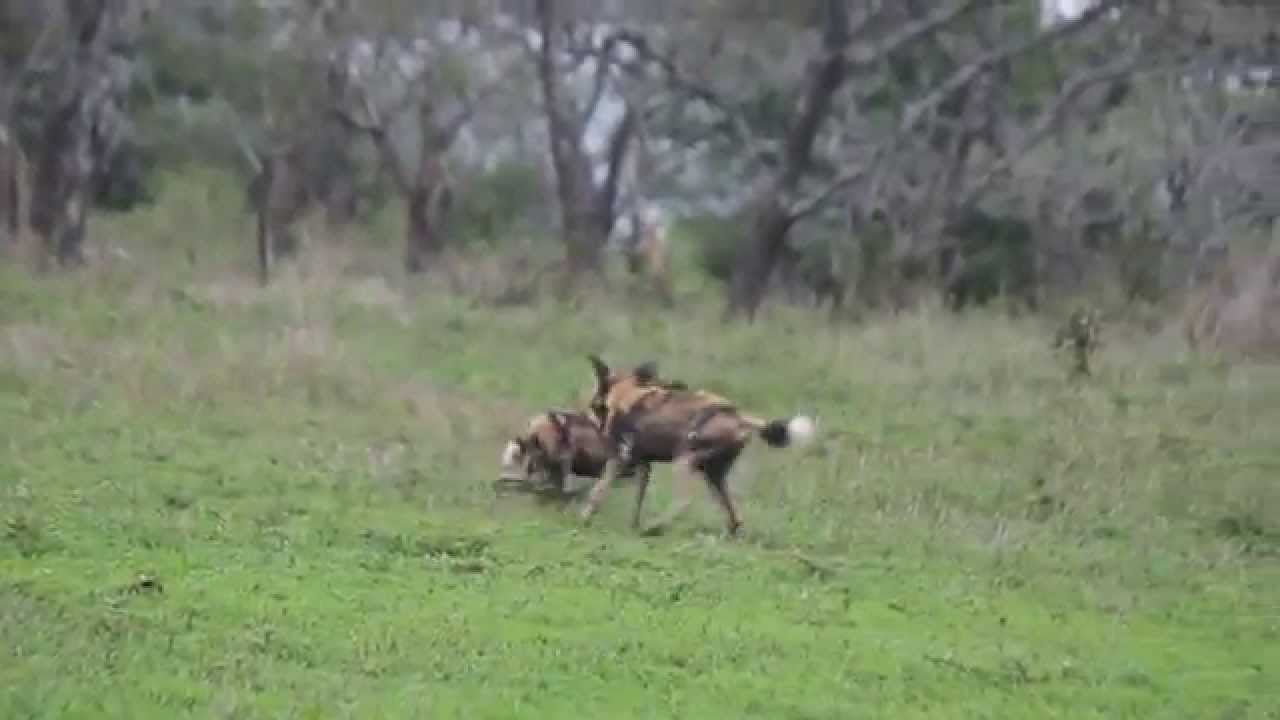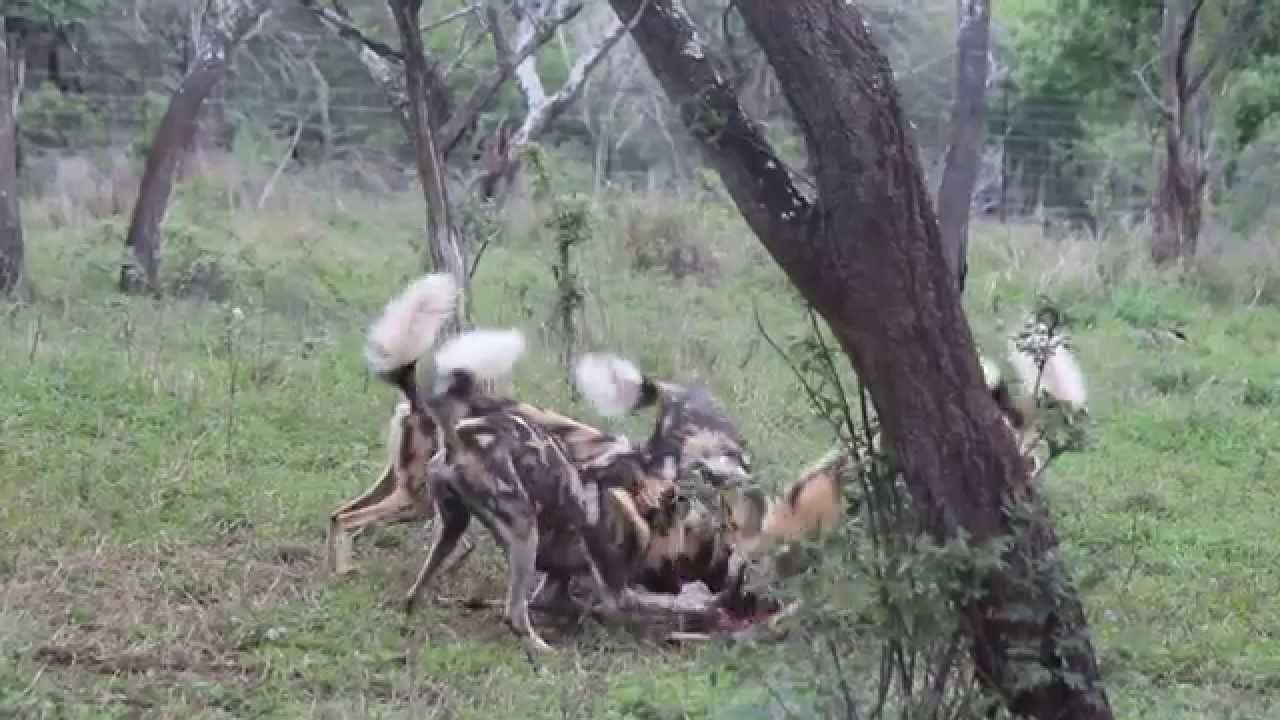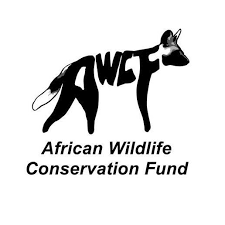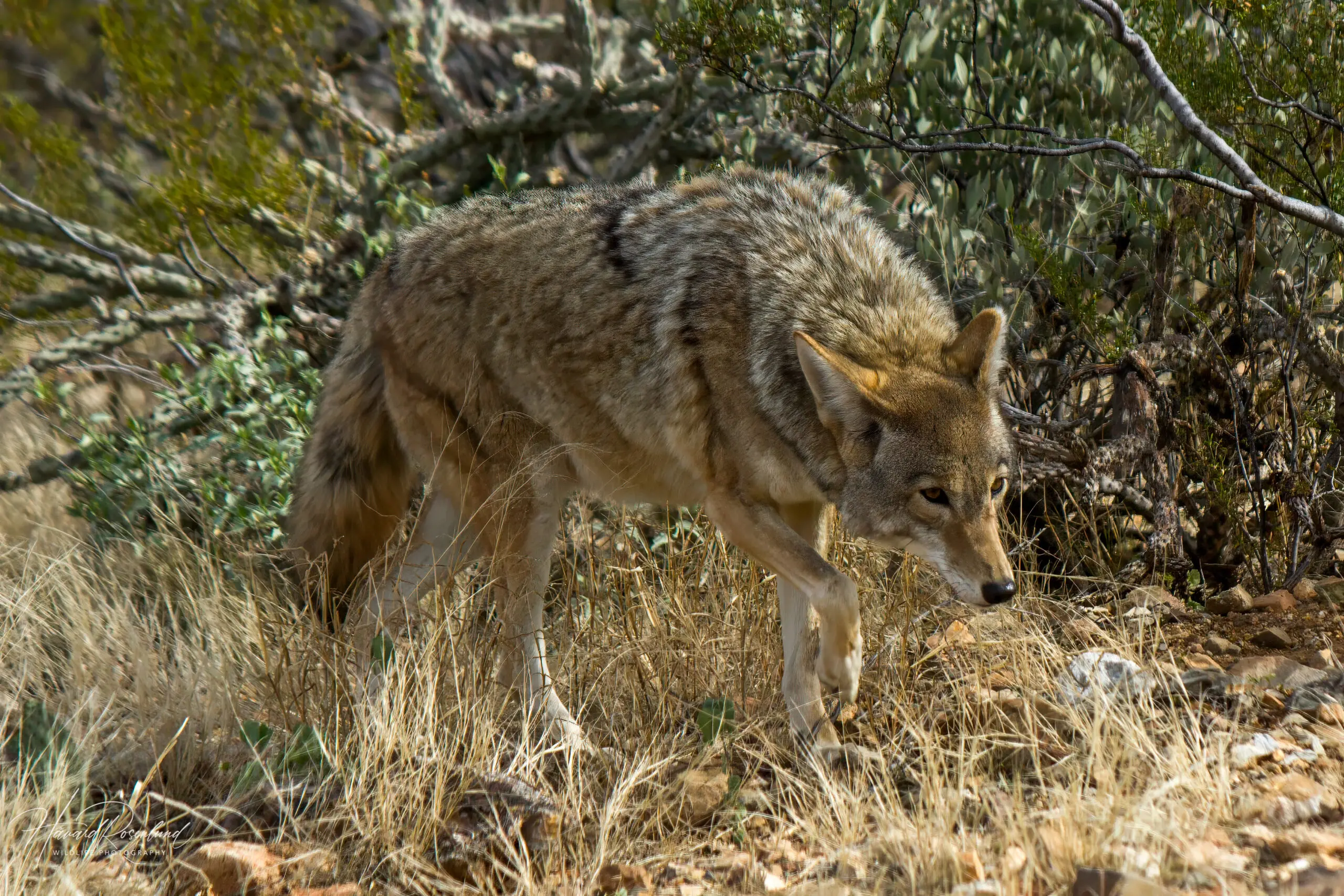Description
The African wild dog, African hunting dog or painted dog (Lycaon pictus) is the second largest wild canid in the world, after the grey wolf (Canis lupus), and the largest in Africa. It reaches a shoulder height of 75 cm (30 in) and a weight of 18-36 kg (40-79 lb). It has a unique and colorful coat, and no individual looks the same. The coat pattern varies with patches of yellow, black, and white distributed unevenly all over its body. It also has large and round ears (making them look hyena-like to some) and a white-tipped fluffy tail believed to be used for communication purposes when hunting and socializing.
Social behavior
African wild dogs live in large packs with a hierarchical setup within both sexes. One pack has one alpha female, which is typically the oldest female, and one alpha male, which is the oldest male or a dominant younger male. Only the alpha pair breeds. Dominance is most often decided without any physical fighting or injuries because most dogs in a pack will be related. The bonds between the individuals of a wild dog pack are much stronger than those seen in lions and hyenas. Unrelated individuals do sometimes join packs, but only temporary over shorter periods. Unrelated dogs might try hostile takeovers of other packs on occasion.
Packs of wild dogs need large areas and are always on the move. They often walk several kilometers a day except when denning. One pack can have a home range spanning 5,000 km², although 200 km² is more common for packs that live in smaller enclosed nature reserves.
Females disperse from their native group to find another pack when they are 14-30 months old. This is unique among social carnivores, as it is normally males who leave their family group in other species. Dispersed females challenge females of another pack for dominance and mating rights with the alpha male. Males most often stay with their family group their whole life and the sex ratios within packs are often two males to one female. In some instances, like in the video below, both males and females break off from different packs to disperse and often join to create new packs elsewhere. Males leave packs, sometimes alongside sisters, when their native pack is too large to sustain new offspring.
The male and female in the video below dispersed from two different packs in Hluhluwe-iMfolozi Park in South Africa. They joined together and moved through large portions of Zululand and many other nature reserves before they were found again in Somkhanda Game Reserve, where this video was taken. Notice how the two play with each other. This is a way to strengthen their bonds.
Hunting & feeding habits
The African wild dog is believed to be one of the most successful hunters in the world, and likely the most successful hunter in Africa with a measured success rate of 80 %. During the hunt they communicate by sound with high-pitched peeps and squeaks. They make similar sounds when playing and being excited. They prey on large-to medium-sized prey species, such as impala, wildebeest, springbok, and kudu, and kill their prey by disemboweling or immobilizing the animal. Feeding often starts before the prey is entirely dead. A pack will normally let the young animals feed first. African wild dogs are not known to attack people. They are seldom dangerous when encountered on foot as they are most likely to flee.
Here’s a video of a pack of African wild dogs feeding on an impala. Notice the sounds they make a bit further in the video and how quickly the carcass is devoured.
Reproduction
There are no breeding season and an alpha pair my breed at any time of the year. Gestation period is 60-80 days and there will normally be a time of 12-14 months between births. It can be as low as six months if the entire previous litter dies. A female can get between 2-19 pups, though a number closer to 10 is most common. Denning is often done in abandoned burrows made by aardvark or porcupine, but other sheltered areas can also be used. Pups stay in the den for 3 months before they join fully with the rest of the pack. If the mother dies, related dogs will try to raise the young if possible. Pups will take part in their first hunt when they are 12-14 months old, and they reach sexual maturity when they are 12-18 months old.
Status
African wild dogs used to be common throughout Africa, with a population of 500,000 stretching all the way north to Egypt. Today fewer than 1,500 mature individuals remain, and the species is listed as endangered on the IUCN Red List. It is often considered the rarest of Africa’s large carnivores. This is sadly true, as their large home ranges and few remaining animals makes it luck more than anything when you get a glimpse of them. I personally think this is an overlooked species internationally, as it is one of the most unique and charismatic animals in Africa and they do need our help to ensure their survival.
Threats
The main threats to African wild dog today are habitat loss and poaching. A few reserves have tried introducing wild dog packs with little success due to their large home range requirements, as this often leads to the wild dogs venturing outside the protected area and into farmlands where they readily get shot and killed. Because of the size requirement, only a few reserves are able to keep wild dogs successfully.
Another threat to the wild dogs is competing carnivores. Lions will try to kill wild dogs on sight to lessen competition over prey. If they can, they will kill a whole pack, though they will not eat them. African wild dogs are known to fear lions and will try to avoid lions at all costs. Spotted hyenas also readily kill wild dogs, though a large pack can and will chase individual hyenas off. This issue has also caused major problems with reestablishing populations in areas with lion and hyena present. If a pack manages to survive the first couple of years, they often adapt to avoid the larger carnivores.
As with other wild canid species, wild dogs are susceptible to diseases such as distemper, rabies, and parvovirus. Because of the few individuals often living in one population, an outbreak can cause local extinction quite rapidly.
Despite the difficulties, some reserves have managed to successfully introduce packs, and these packs are intensively monitored. The wild dogs in Mkuze Game Reserve in KwaZulu-Natal, South Africa, for example, are perhaps the most monitored wild dogs in Africa, with locations reported every morning and evening. The monitoring of the wild dogs in Mkuze and in many other reserves in KwaZulu-Natal is done by Wildlife ACT. They have a volunteer program you can join, and it is probably one of the best chances of getting close to African wild dogs in the wild and one of the best ways to take part in their conservation hands-on. Wildlife ACT also work with the conservation of other endangered species, such as cheetah, lion, black rhino and more. I have personally worked close with this organization, and I highly recommend them.

















